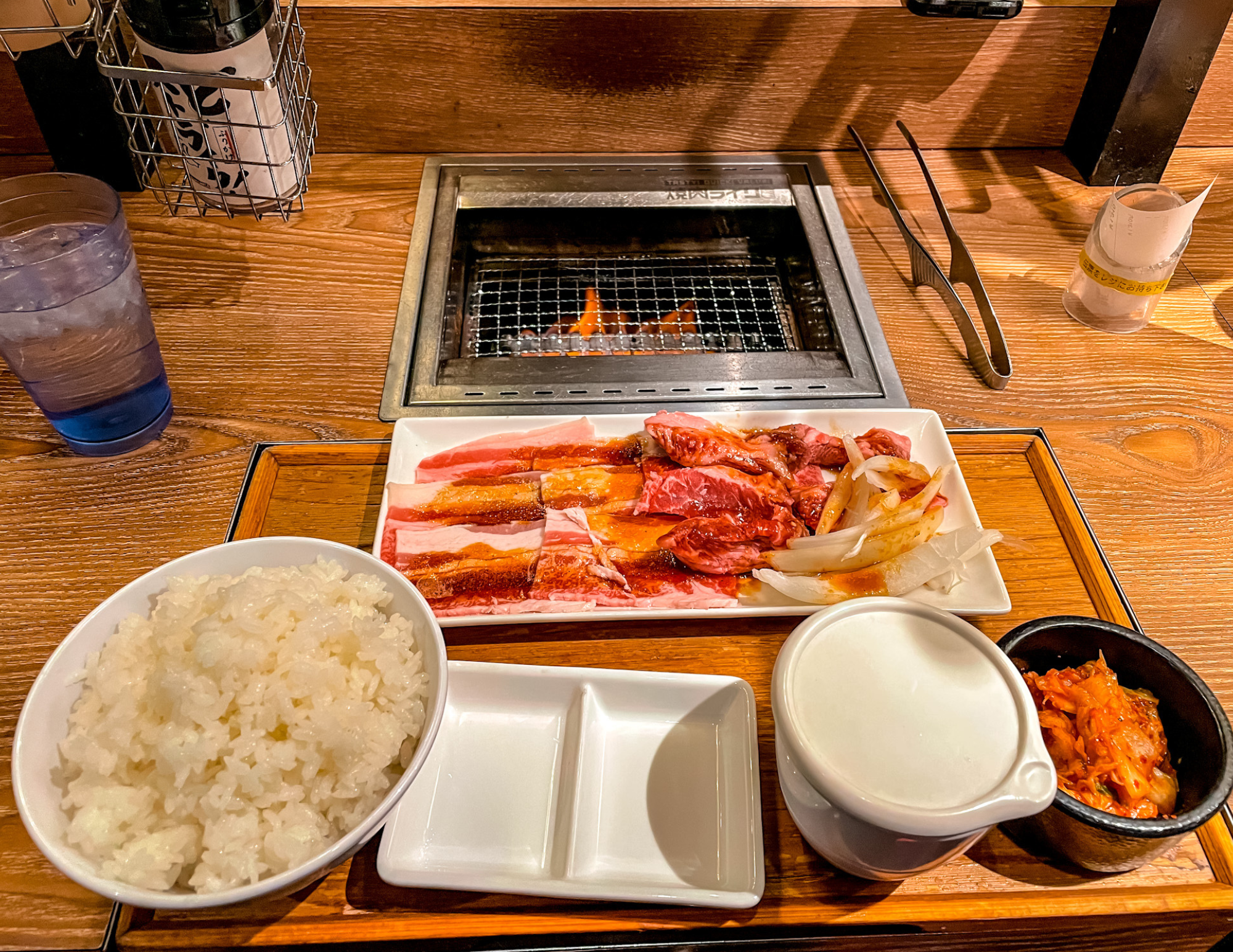Remember when I said most restaurants in Japan run small? Yakiniku Like is the poster child, in the best way. Our branch had maybe 15 seats total: mostly single booths with partitions, plus a few doubles. It was packed (typical Tokyo), so we grabbed three singles; the boys sat side-by-side and I took the seat across. Close enough to laugh, point at sizzling bites, and, most importantly - steal their best pieces. We ordered one of the set menus and dove in. The sauces? OMG. So good.
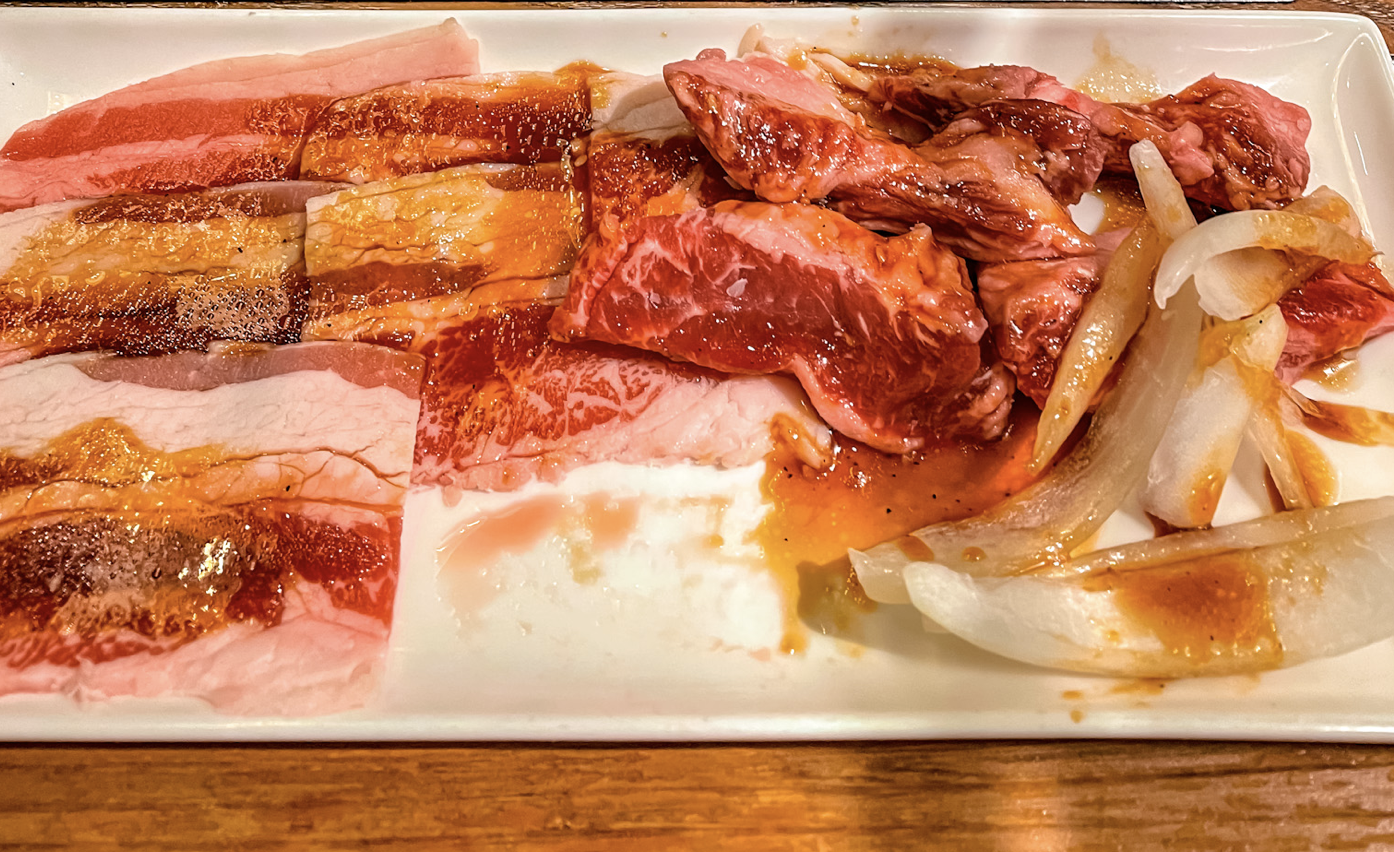
What Yakiniku Like actually is
Think Japanese BBQ designed for one: you get your own smokeless grill, order a value set (meat + rice, seaweed soup, kimchi), and cook at your pace, no negotiating doneness with the table. It’s built around the chain’s “Tasty! Quick! Value!” promise, with sets hitting the counter fast once you order. Several official branch pages spell out the format: one roaster per person, simple sets, served within ~3 minutes when the kitchen’s cruising.
Inside, it’s all efficiency: counter partitions, a touchscreen (or sometimes QR from your phone) to order, and staff that glide in with trays stacked exactly the same way every time. Many seats list the sauce lineup right on the counter; sets usually include onions to grill alongside.
Bonus: those “smokeless” roasters really pull air away, so you don’t walk out smelling like a campfire. Some stores even publish the crazy-fast air exchange stats.
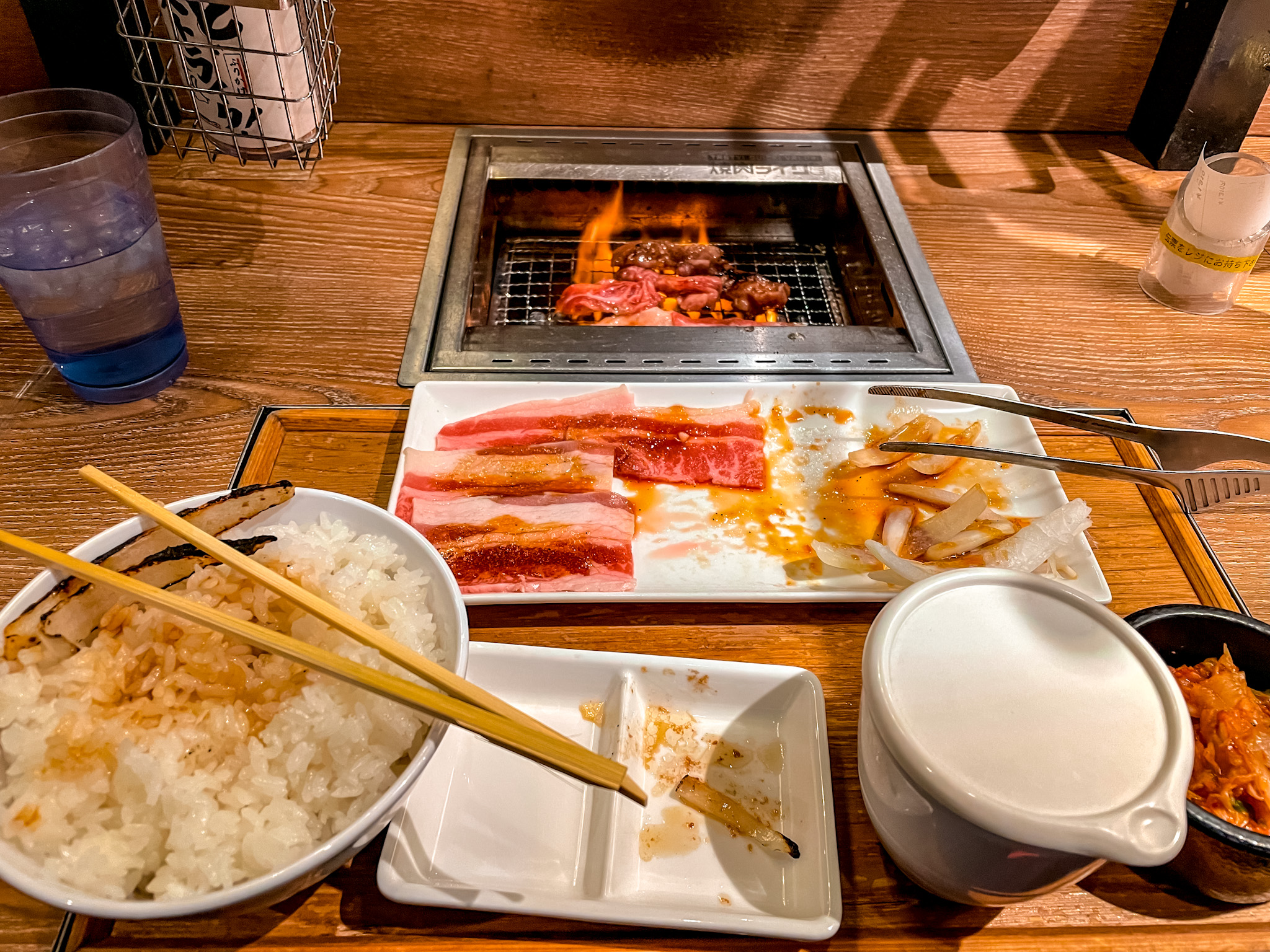
How to order (no stress)
- Join the queue. Some locations use a QR/waitlist at the door, others just line up, follow the sign.
- Pick a set (my recs below). Sets come with rice + wakame soup + kimchi; meat portions vary by set/size. Many branches also have a “custom” menu to build your own.
- Order on the touch panel (English available). Some branches also support phone/QR ordering; overseas branches do for sure, the UI is similar.
- Grill & dip. Meats arrive already seasoned; finish with table sauces like garlic soy, miso, lemon, or straight salt.
Timing: They’re quick, but meat is cooked to order, 20–40 minutes at peak from sit-down to first bite is normal; once you order, trays can land in ~3 minutes when it’s not slammed.
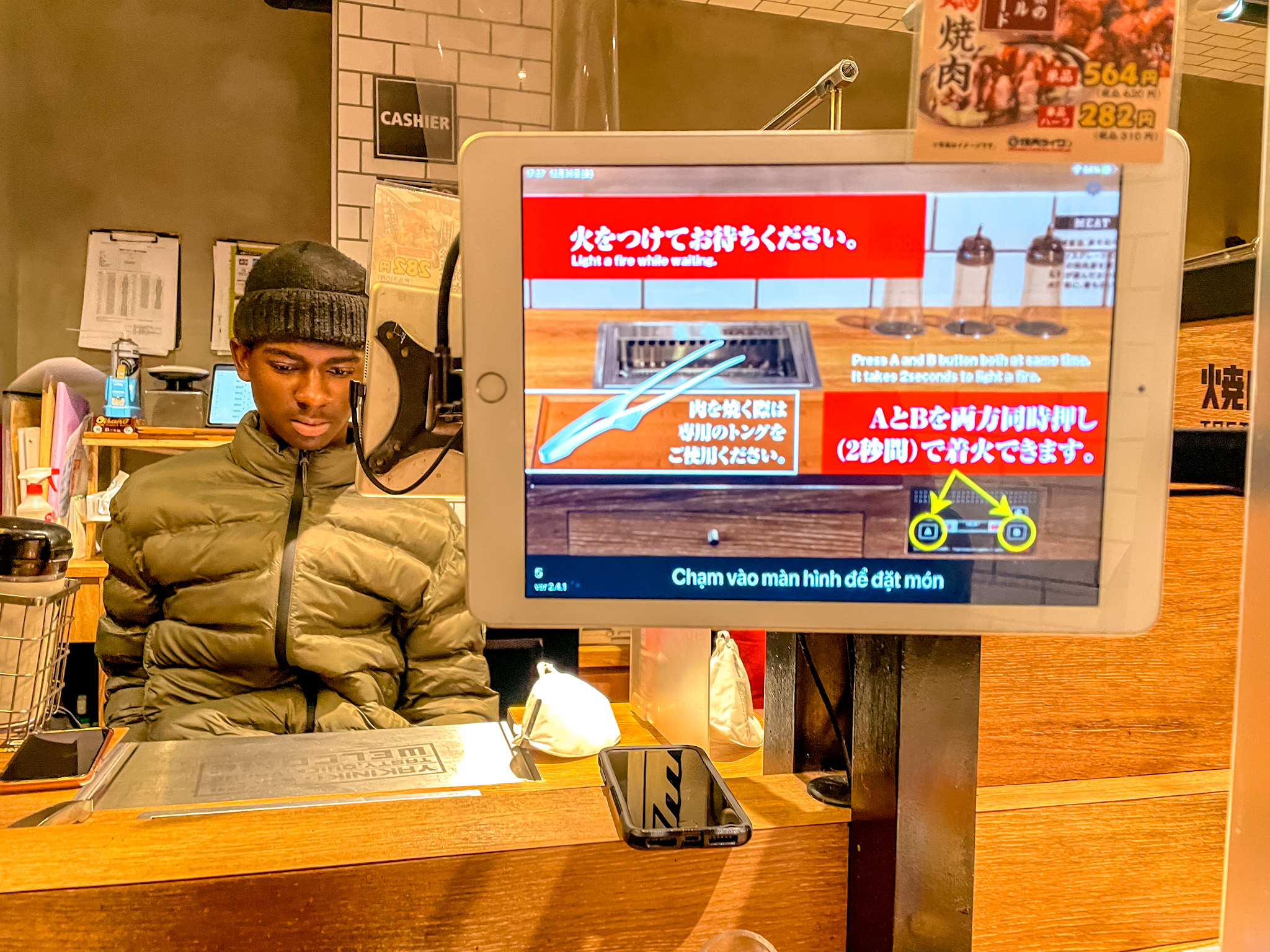
What to order (crowd-pleasers + value)
- Takumi Karubi & Harami Set, The classic combo. Comes with rice/soup/kimchi/onions; sizes/prices vary by branch (think a “small” and “medium”).
- Quattro Set - Four kinds (e.g., karubi, harami, chicken, beef tongue) if you want variety.
- Wagyu Mix - When you want a little luxury (often wagyu karubi + harami + tongue).
- Custom Menu - Build your own: choose cuts (karubi short rib, harami skirt, tongue, pork, chicken), portion size, and sauce. Add the Rice/Soup/Kimchi set to make it a meal.
Lunch deals & refills: Branch promos differ, but you’ll often see weekday lunch sets from ~¥890 and (at some shops) free rice refills until 5 pm, check signage at the door or the branch blog page.
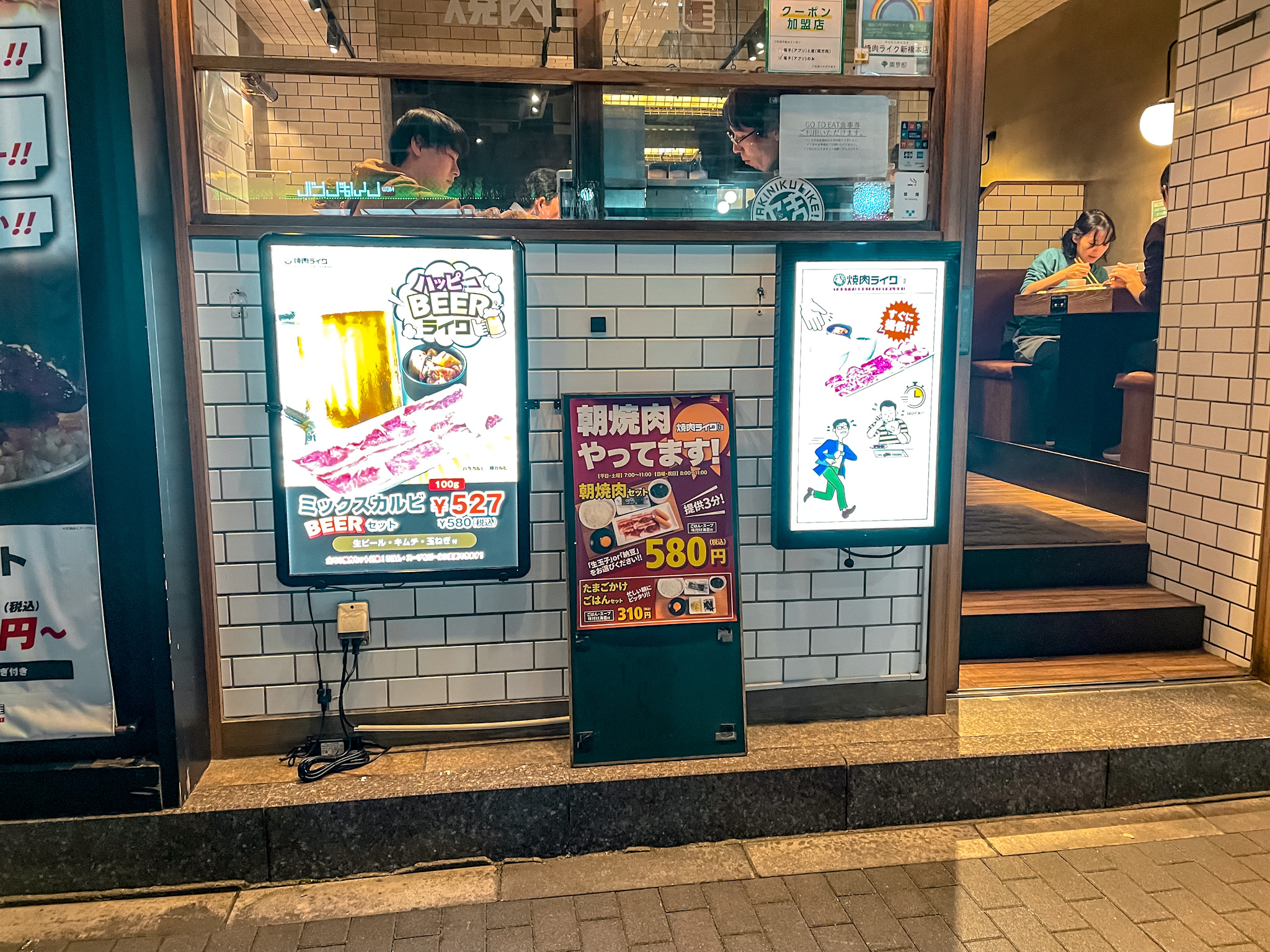
Prices, hours & payment (know before you go)
- Price ballpark: Value sets typically hover around the ¥500–¥1,700 range depending on meat/portion; premium wagyu sets cost more. (Menus vary by branch, peek at the local page.)
- Hours: Many Tokyo shops run late; some are open 24 hours (e.g., Shinjuku Kabukichō). Others open from morning (e.g., Shimbashi Main). Always check your target branch.
- Payment: Most Tokyo branches take credit cards, IC transit cards (Suica/PASMO), and QR payments like PayPay, Rakuten Pay, etc.
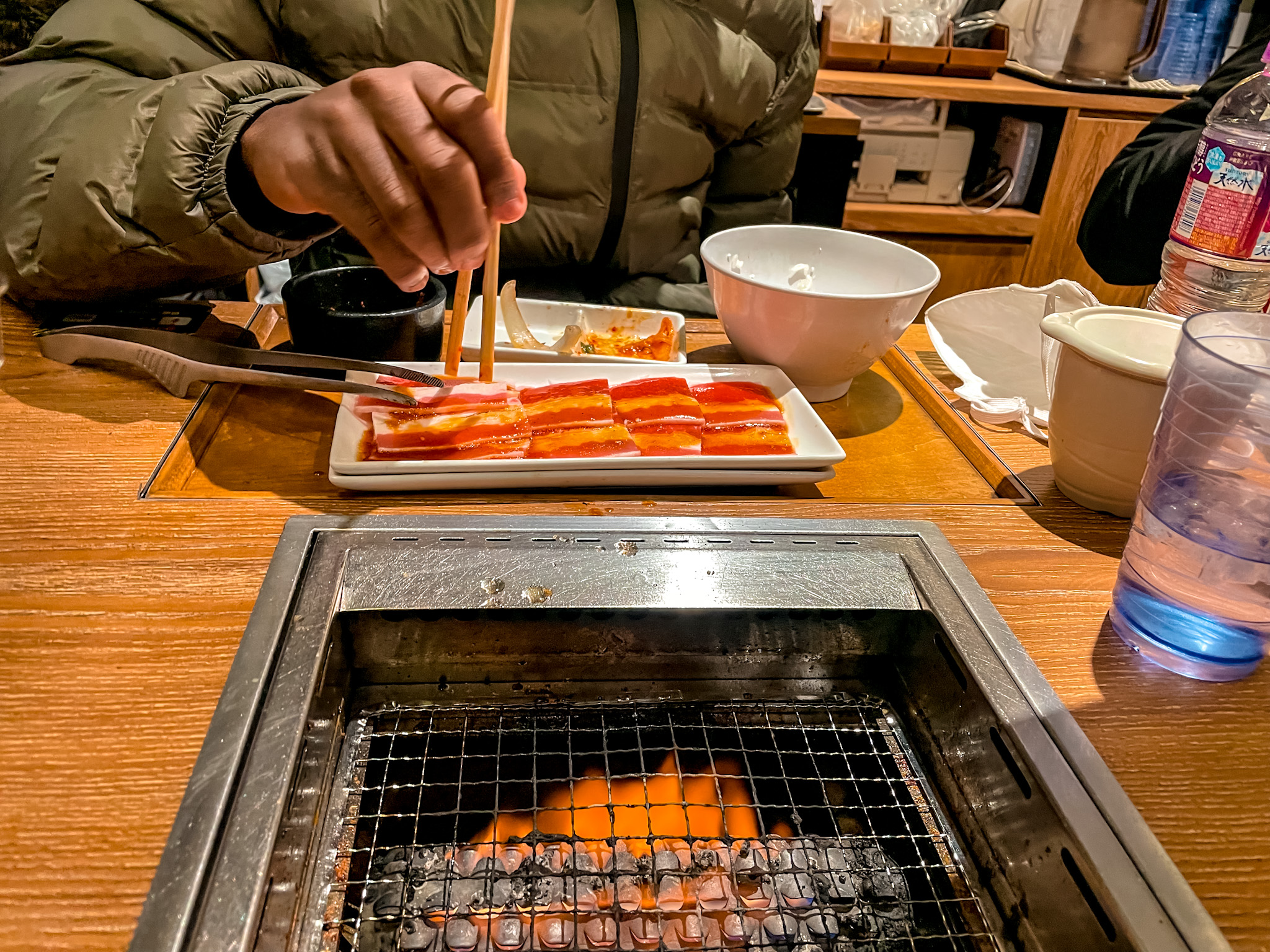
How the cooking actually works (mini playbook)
- Thin cuts = hot/fast. Karubi/harami are usually ~30–60 seconds per side. Don’t crowd the grate, two or three pieces at a time sear better.
- Finish with sauce. Meats are lightly marinated; the magic is in the table sauces (garlic soy, miso, lemon). Try a pinch of salt first to taste the cut, then dip. Pennyless Travels
- Rice strategy: Sauce + meat + rice is the move. If your branch offers rice refills, pace yourself, refill near the end so it stays hot.
- Smokeless grills: Air pulls down through the grate, less smoke, less scent on clothes. (You’ll still smell like happiness.)
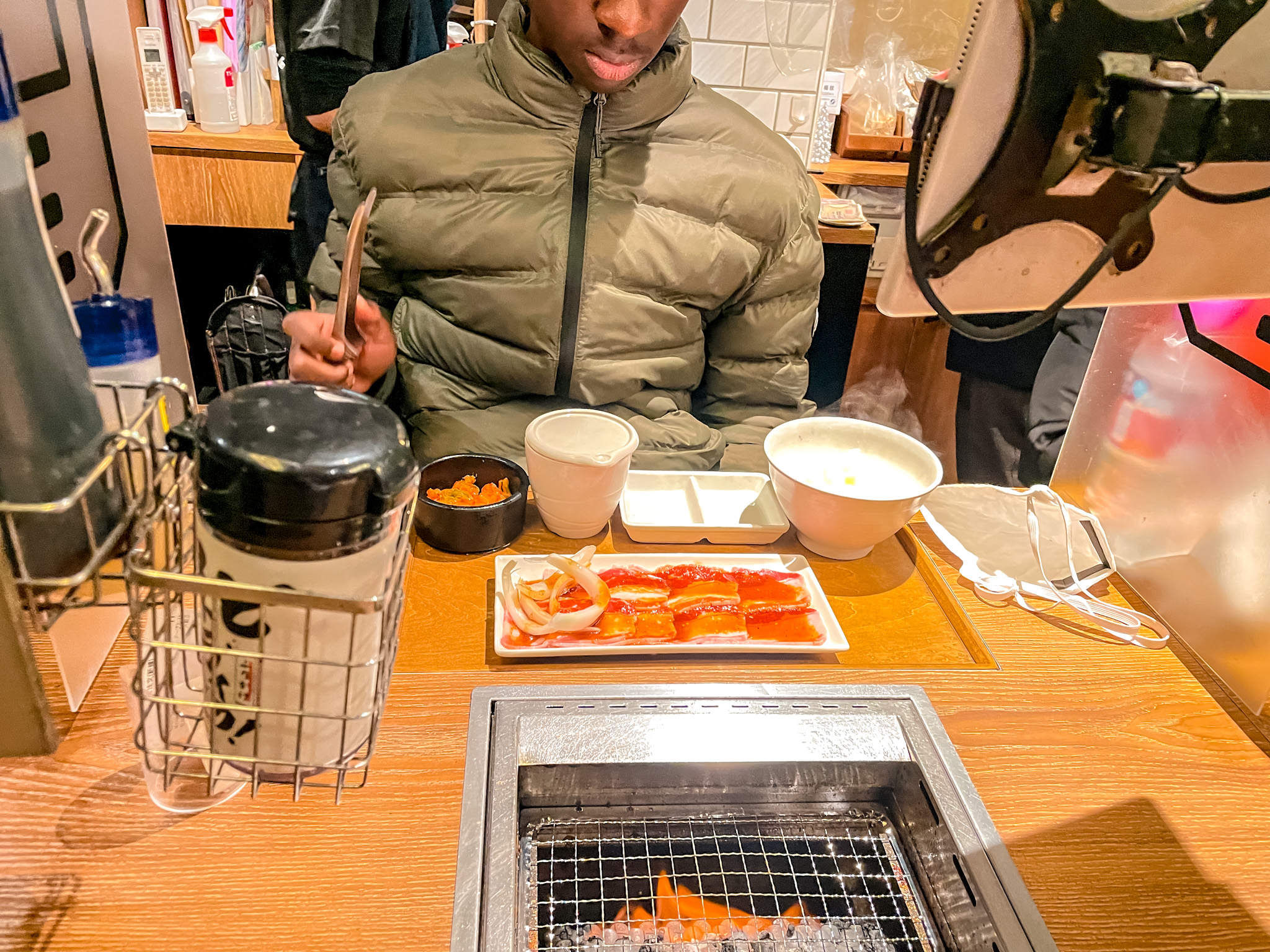
With kids / first time / solo diners
We squeezed into singles and it worked great; partitions give privacy, but you’re still close enough to chat across. Staff are used to newbies, don’t be shy about asking which sauce goes with which cut (they’ll happily point). If you’re nervous, start with a set; you can always add an extra half-portion of your favorite meat from the custom side.
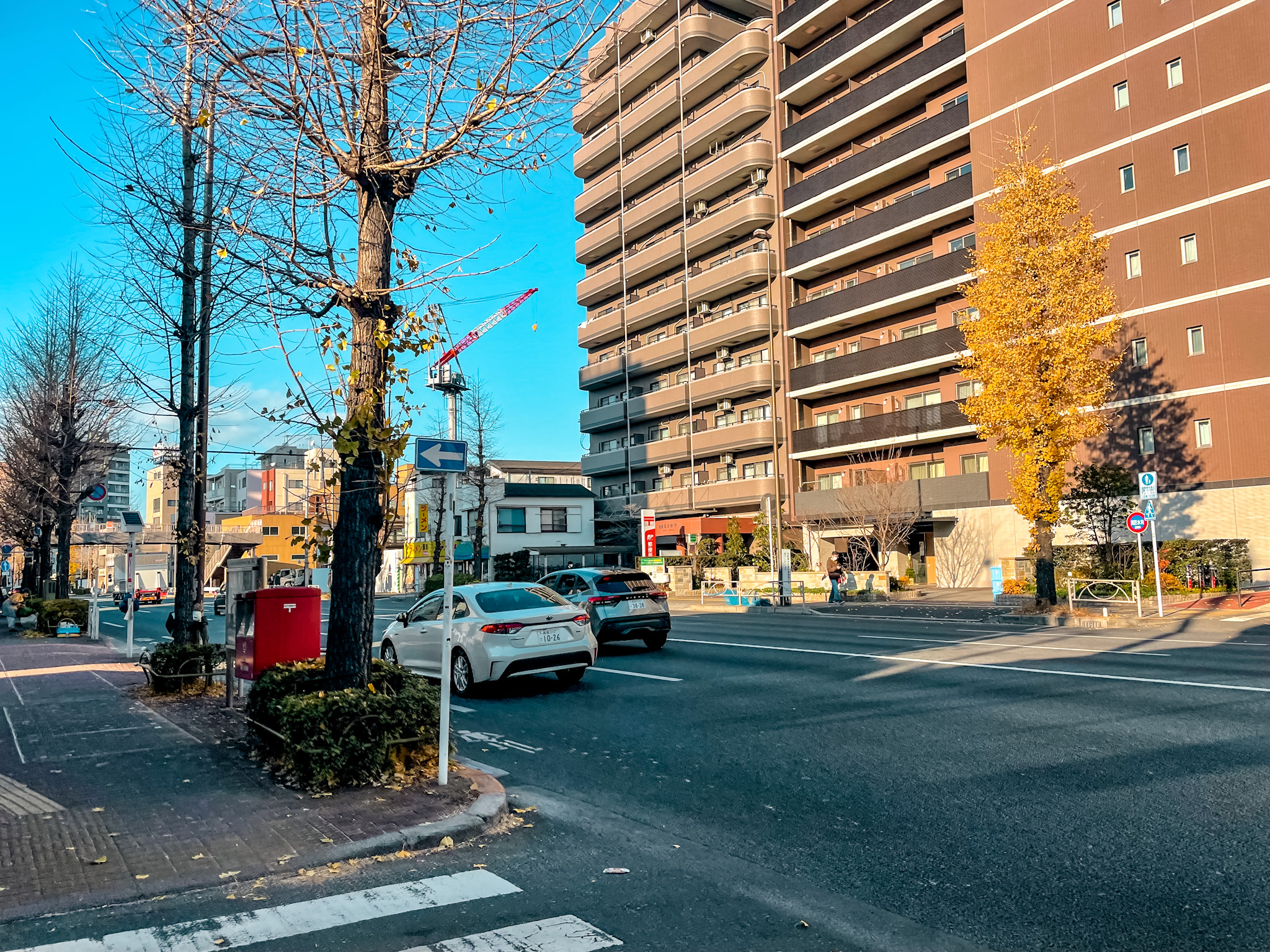
Where to go (Tokyo picks)
There are dozens of branches across the city, pick the one near your plans. A few examples:
- Shinjuku Kabukichō – 24 hours, central, easy late-night bite.
- Shimbashi Main – Early opening (as early as 7:00 on weekdays); commuter-friendly.
- Asakusa / Shibuya Dogenzaka / Shinjuku South – Tourist-convenient, English menus online; all highlight the set (meat + rice/soup/kimchi) and quick service.
Search “Yakiniku Like + [neighborhood]” in Maps and check the branch site for hours/menus before you go.
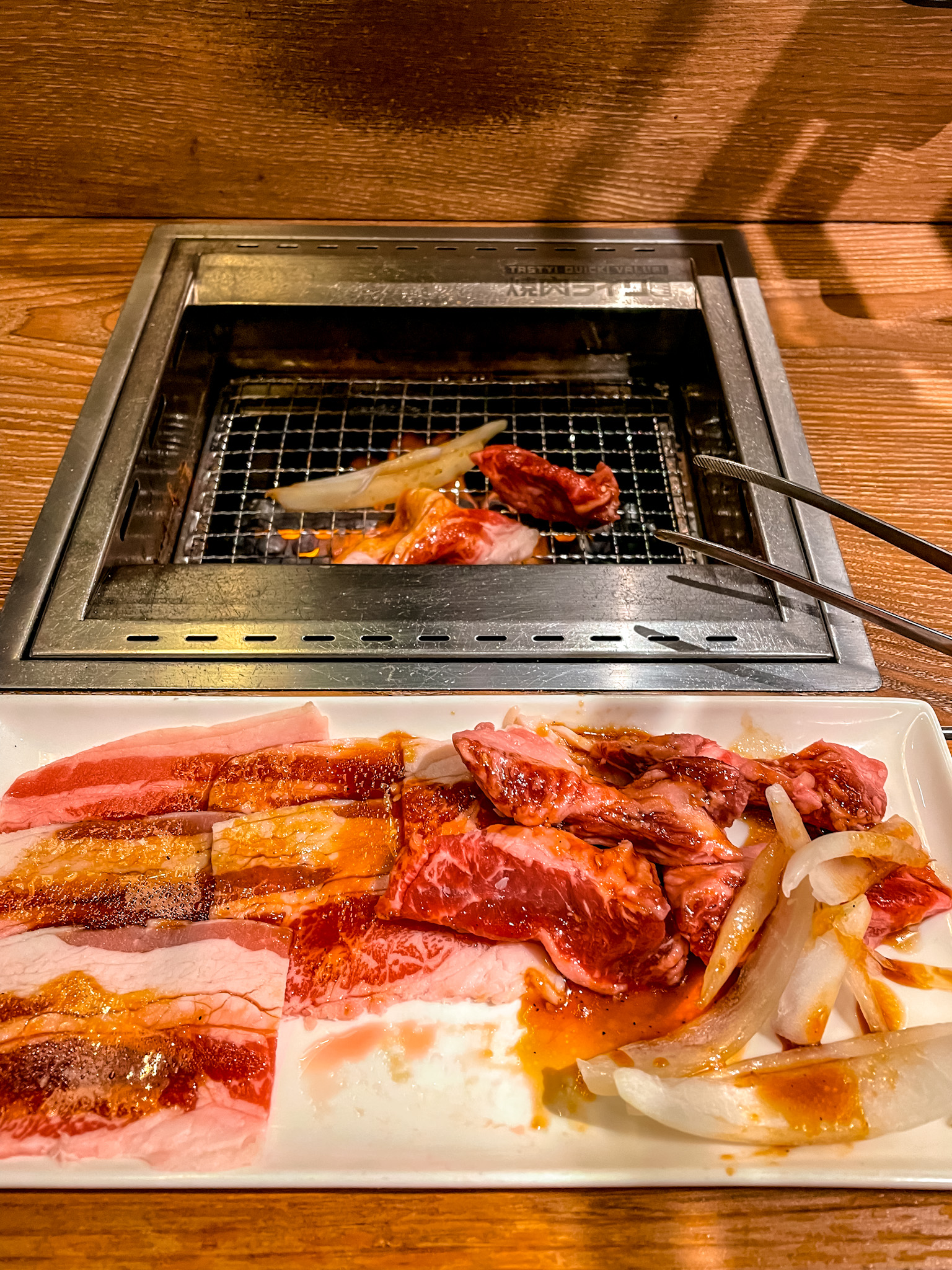
Why we loved it
It’s zero-fuss yakiniku with tiny-space charm: quick sets, solid cuts for the price, grills you control, and sauces that slap. We waited a bit (Tokyo gonna Tokyo), but once seated we were eating fast and having a blast, exactly the kind of casual, affordable meal that becomes a trip staple.
